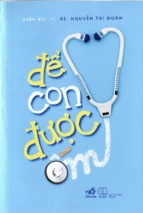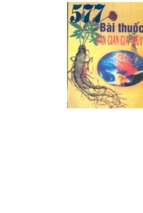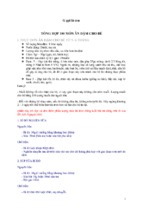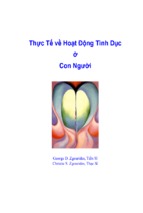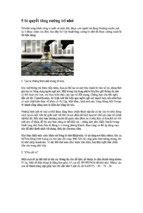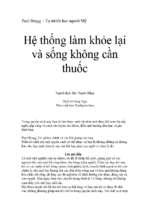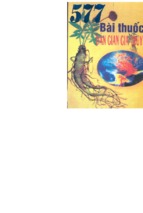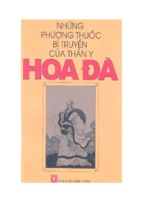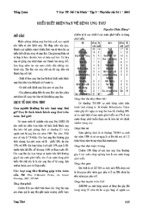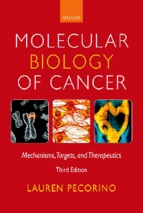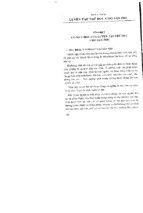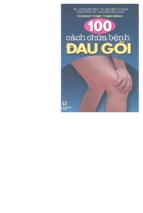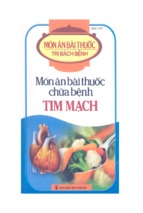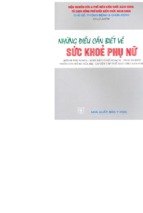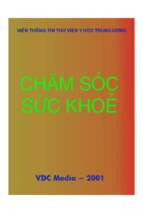Step up to medicine, 4th edition (Mcgraw Hill)
Steven S. Agabegi
Elizabeth D. Agabegi
FOURTH EDITION
•• •
®Wolters Kluwer
Step-Up
SE RIE S
STEP-UP to
MEDICINE
FOURTH EDITION
ED I TORS
Steven S. Agabegi, MD
Elizabeth D. Agabegi, MD
Not authorised for sale in United States, Canada, Australia, New Zealand, Puerto Rico, and U.S. Virgin Islands.
Acquisitions Editor: Tari Broderick
Product Development Editor: Greg Nicholl
Marketing Manager: Joy Fisher-Williams
Design Coordinator: Holly McLaughlin
Compositor: Aptara, Inc.
Fourth Edition
Copyright © 2016, 2013, 2005, 2008 Lippincott Williams & Wilkins, a Wolters Kluwer business.
351 West Camden Street
Two Commerce Square
Baltimore, MD 21201
2001 Market Street
Philadelphia, PA 19103
All rights reserved. This book is protected by copyright. No part of this book may be reproduced in
any form or by any means, including photocopying, or utilized by any information storage and retrieval
system without written permission from the copyright owner.
The publisher is not responsible (as a matter of product liability, negligence, or otherwise) for any
injury resulting from any material contained herein. This publication contains information relating to general principles of medical care that should not be construed as specific instructions for individual patients.
Manufacturers’ product information and package inserts should be reviewed for current information,
including contraindications, dosages, and precautions.
Library of Congress Cataloging-in-Publication Data
Step-up to medicine / editors Steven S. Agabegi, Elizabeth D. Agabegi. — Fourth edition.
p. ; cm.
Includes bibliographical references and index.
ISBN 978-1-4963-2147-3 (alk. paper)
I. Agabegi, Steven S., editor. II. Agabegi, Elizabeth D., editor.
[DNLM: 1. Clinical Medicine—Outlines. 2. Clinical Medicine—Problems and Exercises. WB 18.2]
RC59
616.0076–dc23
2015018774
Care has been taken to confirm the accuracy of the information presented and to describe generally accepted
practices. However, the authors, editors, and publisher are not responsible for errors or omissions or for any
consequences from application of the information in this book and make no warranty, expressed or implied,
with respect to the currency, completeness, or accuracy of the contents of the publication. Application of this
information in a particular situation remains the professional responsibility of the practitioner.
The authors, editors, and publisher have exerted every effort to ensure that drug selection and dosage
set forth in this text are in accordance with current recommendations and practice at the time of publication. However, in view of ongoing research, changes in government regulations, and the constant flow of
information relating to drug therapy and drug reactions, the reader is urged to check the package insert
for each drug for any change in indications and dosage and for added warnings and precautions. This is
particularly important when the recommended agent is a new or infrequently employed drug.
Some drugs and medical devices presented in this publication have Food and Drug Administration
(FDA) clearance for limited use in restricted research settings. It is the responsibility of health care providers to ascertain the FDA status of each drug or device planned for use in their clinical practice.
The publishers have made every effort to trace copyright holders for borrowed material. If they have inadvertently overlooked any, they will be pleased to make the necessary arrangements at the first opportunity.
To purchase additional copies of this book, call our customer service department at (800) 638-3030
or fax orders to (301) 223-2320. International customers should call (301) 223-2300. Visit Lippincott
Williams & Wilkins on the Internet: at LWW.com. Lippincott Williams & Wilkins customer service representatives are available from 8:30 AM to 6 PM, EST.
10 9 8 7 6 5 4 3 2 1
Advisory Board
WADE R. BARKER, DDS
Medical Student
School of Medicine
Texas Tech University Health Sciences
Center
Lubbock, Texas
RYAN BOLTON, MD
Assistant Professor of Medicine
Division of General Internal Medicine
University of Illinois Hospital & Health
Sciences System
Chicago, Illinois
LANCE W. CHAPMAN, MD, MBA
Resident Physician
Department of Dermatology
UC Irvine Medical Center
Irvine, California
MARK D. DUNCAN, MD
Resident Physician, Internal Medicine
Department of Medicine
UCLA Medical Center
Los Angeles, California
AUSTIN IVEY, DDS
Resident Physician
Oral and Maxillofacial Surgery
Baylor University Medical Center
Dallas, Texas
HAWNYEU MATTHEW MOY, MPH
Medical Student
Chicago Medical School
Rosalind Franklin University
Chicago, Illinois
JAMES MURCHISON, MBA
Medical Student
School of Medicine
Texas Tech University Health Sciences
Center
Lubbock, Texas
GITA S. RAO
Medical Student
School of Medicine
Texas Tech University Health Sciences
Center
Lubbock, Texas
AHSAN S. FAROOQI, MD, PhD
School of Medicine
Texas Tech University Health Sciences
Center
Lubbock, Texas
iii
Reviewers
MOHAMMED ARAFEH
Medical Student
Ross University School of Medicine
Dominica, West Indies
DANA BAIGRIE, DO
Medical Student
Edward Via College of Osteopathic
Medicine
Spartanburg, South Carolina
DAVID BALLARD, MD
Medical Student
Louisiana State University Health Sciences
Center
Shreveport, Lousiana
JANELLE BLOCKER
Medical Student
University of Sint Eustatius School of
Medicine
Sint Maarten, Caribbean
F. BRIAN BOUDI, MD, FACP
Assistant Professor of Medicine
University of Arizona College of Medicine
Phoenix, Arizona
MARIA CANNAROZZI, MD
Associate Professor of Internal Medicine and
Pediatrics
University of Central Florida College of
Medicine
Orlando, Florida
JIMMY DEMEO
Medical Student
Lake Erie College of Osteopathic Medicine
Erie, Pennsylvania
MATTHEW FITZ, MD
Associate Professor
Clerkship Director, Internal Medicine
Loyola University Stritch School of
Medicine
Chicago, Illinois
BRIANNA FOX
Medical Student
Ross University School of Medicine
Dominica, West Indies
iv
ABIGAIL GOODMAN, MD
Resident Physician
Department of Pathology
Midwestern University
Downers Grove, Illinois
KRISTA JOHANSEN, MD
Assistant Professor of Anatomy and Physiology
Edward Via College of Osteopathic
Medicine
Blacksburg, Virginia
ASHLEY JONES, MD
Resident Physician
Department of Surgery
Palmetto Health
Columbia, South Carolina
Soor Kothari
Medical Student
St. George’s University School of Medicine
Grenada, West Indies
STEVEN MCAFEE, MD
Resident Physician
Department of Anesthesiology
University of Missouri
Columbia, Missouri
LUIS CARLOS MEJIA-RIVERA, MD
Associate Professor of Clinical Pharmacology
San Juan Bautista School of Medicine
Caguas, Puerto Rico
NATE MOORE
Medical Student
Edward via College of Osteopathic
Medicine
Blacksburg, Virginia
SHERYL RECINOS, MD
Resident Physician
Department of Family Medicine
Riverside County Regional Medical Center
Moreno Valley, California
KARA RONCIN
Medical Student
Medical University of the Americas
Nevis, West Indies
Reviewers
LESLIE SEIJO
Medical Student
San Juan Bautista School of Medicine
Caguas, Puerto Rico
Michael Sostok, MD
Professor of Medicine
University of Cincinnati College of Medicine
Cincinnati, Ohio
ARCHANA SHAH
Medical Student
Texas Tech University Health Sciences
Center School of Medicine
Lubbock, Texas
CHRISTINE TRAN
Medical Student
Mayo Clinic College of Medicine
Rochester, Minnesota
VISHAL SHAH
Medical Student
University of Vermont College of Medicine
Burlington, Vermont
BRIAN WU, MD
Medical Student and PhD Candidate
Keck School of Medicine
University of Southern California
Los Angeles, California
●
v
PREFACE
We wrote the first edition of Step-Up to Medicine during our third year of medical school
because we could not find a review book that was concise, yet covered the breadth of pathology encountered during the internal medicine clerkship and the corresponding NBME shelf
examinations. Our goal was to create a single “study tool” to spare medical students the hassle
and expense of trying to extract pertinent information from multiple sources.
Now in its fourth edition, Step-Up to Medicine has been completely revised based on extensive feedback by both faculty and students. In addition, we welcomed an Advisory Board
of students and residents to the team that worked collaboratively to enrich the content and
ensure that the most tested topics were covered. And, since we know that medical students
and interns have no time to waste, we retained and enhanced the high-yield outline format,
Quick Hits, and Clinical Pearls. Finally, to pull it all together, we added a new 100-question,
clinically-oriented practice exam at the end of the book for self-assessment. Before looking at
the answers, take time to answer these questions because these are the questions you will be
faced with in clinical practice.
We hope that the new edition of Step-Up to Medicine continues to be a valuable tool for
students during the clinical years of medical school. However, we recognize the changing
nature of science and medicine and encourage you to send comments or suggestions to www.
lww.com.
We would like to thank the Advisory Board, and all the reviewers for their efforts in
improving the content for this edition. In particular, we would like to give special thanks
to Stacey Sebring, with whom we worked for the last eight years, for her tireless efforts and
dedication in bringing this and previous editions of Step Up to Medicine to fruition.
Steve and Liz Agabegi
vi
Contents
Advisory Board iii
Reviewers iv
Preface vi
1 Diseases of the Cardiovascular System
Ischemic Heart Disease 1
Congestive Heart Failure 15
Acute Decompensated Heart Failure 21
Arrhythmias 22
Tachyarrhythmias 23
Bradyarrhythmias 31
Diseases of the Heart Muscle 33
Pericardial Diseases 36
Valvular Heart Disease 40
Congenital Heart Diseases 49
Diseases of the Vasculature 52
Cardiac Neoplasms 62
Shock 63
2 Diseases of the Pulmonary System
Obstructive Lung Diseases 68
Lung Neoplasms 77
Diseases of the Pleura 81
Interstitial Lung Disease 87
Respiratory Failure 93
Diseases of the Pulmonary Vasculature 101
Miscellaneous Topics 108
3 Diseases of the Gastrointestinal System
Diseases of the Colon 113
Diseases of the Liver 120
Diseases of the Gallbladder and Biliary Tract 132
Diseases of the Appendix 138
Diseases of the Pancreas 139
Gastrointestinal Bleeding 144
Diseases of the Esophagus 148
Diseases of the Stomach 154
Diseases of the Small Intestine 159
Inflammatory Bowel Disease 162
4 Endocrine and Metabolic Diseases
Diseases
Diseases
Diseases
Diseases
Diseases
of
of
of
of
of
the
the
the
the
the
Thyroid Gland 167
Pituitary Gland 176
Parathyroid Glands 181
Adrenal Glands 183
Pancreas 190
vii
viii
●
Contents
5 Diseases of the Central and Peripheral Nervous Systems
Cerebrovascular Disease (Stroke) 207
Movement Disorders 214
Dementia 217
Altered Mental Status 220
Demyelinating Disease 223
Neuromuscular Diseases 226
Neurocutaneous Syndromes 228
Spinal Cord Diseases 229
Miscellaneous Conditions 230
6 Connective Tissue and Joint Diseases
Connective Tissue Diseases 244
Crystal-induced Arthritides 256
Myopathies and Pain Syndromes 260
Seronegative Spondyloarthropathies 263
Vasculitis 265
7 Diseases of the Renal and Genitourinary System
Renal Failure 269
Proteinuria and Hematuria 280
Glomerular Disease (Glomerulonephropathies) 283
Tubulointerstitial Diseases 287
Renal Cystic Diseases 289
Renal Vascular Disease 292
Stones and Obstructions 293
Neoplasms 298
Miscellaneous Conditions 302
8 Fluids, Electrolytes, and Acid–Base Disorders
Volume Disorders 303
Sodium 306
Calcium 310
Potassium 313
Magnesium 316
Phosphate 318
Acid–base Disorders 319
Contents
9 Hematologic Diseases and Neoplasms
Anemias 325
Microcytic Anemias 328
Normocytic Anemias 331
Macrocytic Anemias 332
Hemolytic Anemias 333
Platelet Disorders 341
Disorders of Coagulation 344
Anticoagulation 349
Plasma Cell Disorders 354
Lymphomas 356
Leukemias 360
Myeloproliferative Disorders 363
10 Infectious Diseases
Infections of the Upper and Lower Respiratory Tracts 365
Infections of the Central Nervous System 373
Infections of the Gastrointestinal Tract 376
Infections of the Genitourinary Tract 380
Sexually Transmitted Diseases 384
Wound and Soft Tissue Infections 395
Infections of the Bones and Joints 398
Zoonoses and Arthropod-borne Diseases 401
Common Fungal Infections 404
Other Fungal Infections 407
Common Parasitic Infections 407
Fever and Sepsis 407
Miscellaneous Infections 412
11 Diseases of the Skin and Hypersensitivity Disorders
Common Dermatologic Problems 415
Inflammatory, Allergic, and Autoimmune Skin Conditions 415
Skin Conditions Related to Microbial Infection 422
Precancerous and Cancerous Diseases of the Skin 426
Miscellaneous Skin Conditions 429
Allergic Reactions 432
Drug Allergy 433
Food Allergy 434
Insect Sting Allergy 434
Dermatology-related Key Terms 435
●
ix
x
●
Contents
12 Ambulatory Medicine
Cardiovascular Diseases 436
Headache 444
Upper Respiratory Diseases 447
Gastrointestinal Diseases 451
Musculoskeletal Problems 461
Overview of Musculoskeletal Examination Maneuvers 461
Diseases of the Eye 473
Sleep Disorders 478
Miscellaneous Topics 479
APPENDIX
Radiographic Interpretation 492
Electrocardiogram Interpretation 496
Physical Examination Pearls 508
Workup and Management of Common Problems 511
Basic Statistics and Evidence-based Medicine 516
End of Life Issues and Informed Consent 520
Questions 523
Answers 552
Index 572
Diseases of the
Cardiovascular
System
1
Stable Angina Pectoris
A. General characteristics
1. Stable angina pectoris is due to fixed atherosclerotic lesions that narrow the major
coronary arteries. Coronary ischemia is due to an imbalance between blood supply
and oxygen demand, leading to inadequate perfusion. Stable angina occurs when
oxygen demand exceeds available blood supply.
2. Major risk factors
a. Diabetes mellitus (DM)—worst risk factor
b. Hyperlipidemia—elevated low-density lipoprotein (LDL)
c. Hypertension (HTN)—most common risk factor
d. Cigarette smoking
e. Age (men >45 years; women >55 years)
f. Family history of premature coronary artery disease (CAD) or myocardial
infarction (MI) in first-degree relative: Men <55 years; women <65 years
g. Low levels of high-density lipoprotein (HDL)
3. Minor risk factors (less clear significance) include obesity, sedentary lifestyle (lack
of physical activity), stress, excess alcohol use.
4. Prognostic indicators of CAD
a. Left ventricular function (ejection fraction [EF])
• Normal >50%
• If <50%, associated with increased mortality
b. Vessel(s) involved (severity/extent of ischemia)
• Left main coronary artery—poor prognosis because it covers approximately
two-thirds of the heart
• Two- or three-vessel CAD—worse prognosis
Quick HIT
CAD can have the following
clinical presentations:
• Asymptomatic
• Stable angina pectoris
• USA pectoris
• MI—either NSTEMI or
STEMI
• Sudden cardiac death
Quick HIT
In a patient with CAD, goal of
LDL is less than 100 mg/dL.
Quick HIT
Typical Anginal Chest Pain
• Substernal
• Worse with exertion
• Better with rest or nitroglycerin
B. Clinical features
1. Chest pain or substernal pressure sensation
a. Lasts less than 10 to 15 minutes (usually 1 to 5 minutes)
b. Frightening chest discomfort, usually described as heaviness, pressure,
squeezing, tightness; rarely described as sharp or stabbing pain
c. Pain is often gradual in onset
2. Brought on by factors that increase myocardial oxygen demand, such as exertion
or emotion
3. Relieved with rest or nitroglycerin
4. Note that ischemic pain does NOT change with breathing nor with body position. Also, patients with ischemic pain do not have chest wall tenderness. If any of
these are present, the pain is not likely to be due to ischemia
1
Diseases of the Cardiovascular System
Ischemic Heart Disease
2
●
STEP-UP TO MEDICINE
CLI NICAL
PEARL
1-1
There Are Two Conditions Termed Syndrome X
Diseases of the Cardiovascular System
1. Metabolic Syndrome X
• Any combination of hypercholesterolemia, hypertriglyceridemia, impaired glucose tolerance, diabetes,
hyperuricemia, HTN.
• Key underlying factor is insulin resistance (due to obesity).
2. Syndrome X
• Exertional angina with normal coronary arteriogram: Patients present with chest pain after exertion but
have no coronary stenoses at cardiac catheterization.
• Exercise testing and nuclear imaging show evidence of myocardial ischemia.
• Prognosis is excellent.
C. Diagnosis (of CAD)
Quick HIT
Best initial test for all forms
of chest pain is ECG.
Quick HIT
Stress testing is used in the
following situations:
• To confirm diagnosis of
angina
• To evaluate response of
therapy in patients with
documented CAD
• To identify patients with
CAD who may have a
high risk of acute coronary events
Quick HIT
Exercise stress ECG is
ideal initial test if able to
exercise and normal resting
ECG (readily available and
relatively inexpensive).
Quick HIT
A stress test is generally
considered positive if the
patient develops any of the
following during exercise:
ST segment depression,
chest pain, hypotension, or
significant arrhythmias.
1. Note that physical examination in most patients with CAD is normal (see Clinical
Pearl 1-1)
2. Resting ECG
a. Usually normal in patients with stable angina
b. Q waves are consistent with a prior MI
c. If ST segment or T-wave abnormalities are present during an episode of chest
pain, then treat as unstable angina (USA)
3. Stress test—useful for patients with an intermediate pretest probability of CAD
based upon age, gender, and symptoms.
a. Stress ECG
• Highest sensitivity if patients have normal resting ECG, such that changes
can be noted.
• Test involves recording ECG before, during, and after exercise on a treadmill.
• 75% sensitive if patients are able to exercise sufficiently to increase heart rate
to 85% of maximum predicted value for age. A person’s maximum heart rate
is calculated by subtracting age from 220 (220—age).
• Exercise-induced ischemia results in subendocardial ischemia, producing ST
segment depression. So the detection of ischemia on an ECG stress test is
based on presence of ST segment depression.
• Other positive findings include onset of heart failure or ventricular arrhythmia during exercise or hypotension.
• Patients with a positive stress test result should undergo cardiac catheterization.
b. Stress echocardiography
• Performed before and immediately after exercise. Exercise-induced ischemia
is evidenced by wall motion abnormalities (e.g., akinesis or dyskinesis) not
present at rest.
• Favored by many cardiologists over stress ECG. It is more sensitive in detecting ischemia, can assess LV size and function, can diagnose valvular disease,
and can be used to identify CAD in the presence of pre-existing ECG abnormalities (see Clinical Pearl 1-2).
• Again, patients with a positive test result should undergo cardiac catheterization.
CLI NICAL
PEARL
1-2
Types of Stress Tests
Test
Method of Detecting Ischemia
Exercise ECG
Exercise or dobutamine echocardiogram
Exercise or dipyridamole perfusion study (thallium/
technetium)
ST segment depression
Wall motion abnormalities
Decreased uptake of the nuclear isotope during
exercise
dise a ses o f t h e c a r dio v a scu l a r s y stem
CLINICAL
PEARL
1-3
Cardiac Catheterization
1. Most accurate method of determining a specific cardiac diagnosis.
2. Provides information on hemodynamics, intracardiac pressure measurements, cardiac output, oxygen
s aturation, etc.
3. Coronary angiography (see below) is almost always performed as well for visualization of coronary arteries.
4. There are many indications for cardiac catheterization (generally performed when revascularization or other
surgical intervention is being considered):
• After a positive stress test.
• Acute MI with intent of performing angiogram and PCI.
• In a patient with angina in any of the following situations: When noninvasive tests are nondiagnostic,
angina that occurs despite medical therapy, angina that occurs soon after MI, and any angina that is a
diagnostic dilemma.
• If patient is severely symptomatic and urgent diagnosis and management are necessary.
• For evaluation of valvular disease, and to determine the need for surgical intervention.
Coronary Arteriography (Angiography)
1. Most accurate method of identifying the presence and severity of CAD; the standard test for delineating
coronary anatomy.
2. Main purpose is to identify patients with severe coronary disease to determine whether revascularization
is needed. Revascularization with PCI involving a balloon and/or a stent can be performed at the same time
as the diagnostic procedure.
3. Coronary stenosis >70% may be significant (i.e., it can produce angina).
3
Diseases of the Cardiovascular System
c. Information gained from a stress test can be enhanced by stress myocardial perfusion imaging after IV administration of a radioisotope such as thallium 201
during exercise.
• Viable myocardial cells extract the radioisotope from the blood. No radioisotope uptake means no blood flow to an area of the myocardium.
• It is important to determine whether the ischemia is reversible, that is, whether
areas of hypoperfusion are perfused over time as blood flow eventually equalizes. Areas of reversible ischemia may be rescued with percutaneous coronary
intervention (PCI) or coronary artery bypass graft (CABG). Irreversible ischemia, however, indicates infarcted tissue that cannot be salvaged.
• Perfusion imaging increases the sensitivity and specificity of exercise stress
tests, but is also more expensive, subjects the patient to radiation, and is
often not helpful in the presence of a left bundle branch block.
4. If the patient cannot exercise, perform a pharmacologic stress test.
a. IV adenosine, dipyridamole, or dobutamine can be used. The cardiac stress
induced by these agents takes the place of exercise. This can be combined with
an ECG, an echocardiogram, or nuclear perfusion imaging.
b. IV adenosine and dipyridamole cause generalized coronary vasodilation. Since
diseased coronary arteries are already maximally dilated at rest to increase
blood flow, they receive relatively less blood flow when the entire coronary system is pharmacologically vasodilated.
c. Dobutamine increases myocardial oxygen demand by increasing heart rate,
blood pressure, and cardiac contractility.
5. Holter monitoring (ambulatory ECG) can be useful in detecting silent ischemia
(i.e., ECG changes not accompanied by symptoms). The Holter monitor is also
used for evaluating arrhythmias, heart rate variability, and to assess pacemaker and
implantable cardioverter-defibrillator (ICD) function.
a. Continuously examines patient’s cardiac rhythm over 24 to 72 hours during
normal activity
b. Useful for evaluating unexplained syncope and dizziness as well
6. Cardiac catheterization with coronary angiography (see Clinical Pearl 1-3, Figure 1-1)
a. Coronary angiography—definitive test for CAD. Often performed with concurrent PCI or for patients being considered for revascularization with CABG.
●
●
STEP-UP TO MEDICINE
Diseases of the Cardiovascular System
4
Figure
1-1
Coronary angiogram. Injection of the right coronary artery shows a stenosis in the midportion
of the vessel, indicated by the arrow.
(From Lilly LS. Pathophysiology of Heart Disease. 5th ed. Philadelphia, PA: Lippincott Williams & Wilkins, 2011:152,
Figure 6.8; Courtesy of Dr. William Daley.)
b. Contrast is injected into coronary vessels to visualize any stenotic lesions. This
defines the location and extent of coronary disease.
c. Angiography is the most accurate test for detecting CAD.
d. If CAD is severe (e.g., left main or three-vessel disease), refer patient for s urgical
revascularization (CABG).
D. Treatment
Quick HIT
Standard of care for stable
angina is aspirin and a
β-blocker (only ones that
lower mortality), and
nitrates for chest pain.
Quick HIT
Side effects of nitrates:
• Headache
• Orthostatic hypotension
• Tolerance
• Syncope
1. Risk factor modification
a. Smoking cessation cuts coronary heart disease (CHD) risk in half by 1 year
after quitting.
b. HTN—vigorous BP control reduces the risk of CHD, especially in diabetic
patients.
c. Hyperlipidemia—reduction in serum cholesterol with lifestyle modifications
and HMG-CoA reductase inhibitors (statins) reduce CHD risk.
d. DM—type II diabetes is considered to be a cardiovascular heart disease equivalent, and strict glycemic control should be strongly emphasized.
e. Obesity—weight loss modifies other risk factors (diabetes, HTN, and hyperlipidemia) and provides other health benefits.
f. Exercise is critical; it minimizes emotional stress, promotes weight loss, and
helps reduce other risk factors.
g. Diet: Reduce intake of saturated fat (<7% total calories) and cholesterol (<200 mg/
day).
2. Medical therapy
a. Aspirin
• Indicated in all patients with CAD
• Decreases morbidity—reduces risk of MI
b. β-Blockers—block sympathetic stimulation of heart. First-line choices include
atenolol and metoprolol.
• Reduce HR, BP, and contractility, thereby decreasing cardiac work (i.e.,
β-blockers lower myocardial oxygen consumption)
• Have been shown to reduce the frequency of coronary events
c. Nitrates—cause generalized vasodilation
• Relieve angina; reduce preload myocardial oxygen demand
• May prevent angina when taken before exertion
dise a ses o f t h e c a r dio v a scu l a r s y stem
CLINICAL
PEARL
1-4
Percutaneous Coronary Intervention
• Consists of both coronary angioplasty with a balloon and stenting.
• Should be considered in patients with one-, two-, or three-vessel disease. Even with three-vessel
disease, mortality and freedom from MI have been shown to be equivalent between PTCA with stenting
and CABG. The only drawback is the higher frequency of revascularization procedures in patients who
received a stent.
• Best if used for proximal lesions.
• Restenosis is a significant problem (up to 40% within first 6 months); however, if there is no evidence of
restenosis at 6 months, it usually does not occur. New techniques and technologic improvements such as
drug-eluting stents are attempting to reduce this problem.
Coronary Artery Bypass Grafting
• While CABG remains the standard of care at some institutions for patients with high-risk disease, the
P RECOMBAT and SYNTAX trails have shown that PTCA with stenting may be as good as CABG even in
patients with left main CAD. CABG is still used as the primary method of revascularization in a small number of patients with STEMI. In addition, it may be indicated in patients with cardiogenic shock post-MI, after
complications with PCI, in the setting of ventricular arrhythmias, and with mechanical complications after
acute MI.
• Main indications for CABG: Three-vessel disease with >70% stenosis in each vessel. Left main coronary
disease with >50% stenosis, left ventricular dysfunction.
5
Quick HIT
The COURAGE trial showed
essentially no difference
in all cause mortality and
nonfatal MIs between
patients with stable angina
treated with maximal medical therapy alone versus
medical therapy with PCI
and bare metal stenting.
Quick HIT
PCI is referred to as angioplasty.
Diseases of the Cardiovascular System
• Effect on prognosis is unknown; main benefit is symptomatic relief
• Can be administered orally, sublingually, transdermally, intravenously, or in
paste form. For chronic angina, oral or transdermal patches are used. For
acute coronary syndromes (see below), either sublingual, paste, or IV forms
are used
d. Calcium channel blockers
• Cause coronary vasodilation and afterload reduction, in addition to reducing
contractility.
• Now considered a secondary treatment when β-blockers and/or nitrates are
not fully effective. None of the calcium channel blockers have been shown
to lower mortality in CAD. In fact, they may increase mortality because they
raise heart rates. Do not routinely use these drugs in CAD.
e. If congestive heart failure (CHF) is also present, treatment with ACE inhibitors
and/or diuretics may be indicated as well.
3. Revascularization
a. May be preferred for high-risk patients, although there is some controversy
whether revascularization is superior to medical management for a patient with
stable angina and stenosis >70%
b. Two methods—PCI and CABG—see Clinical Pearl 1-4
c. Revascularization does not reduce incidence of MI, but does result in significant improvement in symptoms
4. Management decisions (general guidelines)—risk factor modification and aspirin
are indicated in all patients. Manage patients according to overall risk
a. Mild disease (normal EF, mild angina, single-vessel disease)
• Nitrates (for symptoms and as prophylaxis) and a β-blocker are appropriate
• Consider calcium channel blockers if symptoms continue despite nitrates and
β-blockers
b. Moderate disease (normal EF, moderate angina, two-vessel disease)
• If the above regimen does not control symptoms, consider coronary angiography to assess suitability for revascularization (either PCI or CABG)
c. Severe disease (decreased EF, severe angina, and three-vessel/left main or left
anterior descending disease)
• Coronary angiography and consider for CABG
●
6
●
STEP-UP TO MEDICINE
Quick HIT
Acute Coronary Syndrome
• The clinical manifestations of atherosclerotic
plaque rupture and coronary occlusion
• Term generally refers to
USA, NSTEMI, or STEMI
Diseases of the Cardiovascular System
Quick HIT
Stress testing only detects
flow-limiting high-grade
lesions. Thus, can still have
MI despite negative stress
test because mechanism of
MI is acute plaque rupture
onto a moderate lesion.
Quick HIT
USA and non-ST segment
elevation MI are often considered together because it
is very difficult to distinguish the two based on
patient presentation. If cardiac enzymes are elevated,
then the patient has non-ST
segment elevation MI.
Quick HIT
The ESSENCE trial showed
that in USA and non-ST
segment elevation MI, risk
of death, MI, or recurrent
angina was lower in the
enoxaparin group than
in the heparin group at
14 days, 30 days, and 1 year.
The need for revascularization was also lower in the
enoxaparin group.
Quick HIT
Thrombolytic therapy
(fibrinolysis) has not been
proven to be beneficial in
USA. This is only indicated
in STEMI when no access
to urgent catheterization
for PCI.
Unstable Angina Pectoris
A. General characteristics
1. Pathophysiology
a. With USA, oxygen demand is unchanged. Supply is decreased secondary to
reduced resting coronary flow. This is in contrast to stable angina, which is
due to increased demand.
b. USA is significant because it indicates stenosis that has enlarged via thrombosis,
hemorrhage, or plaque rupture. It may lead to total occlusion of a coronary vessel.
2. The following patients may be said to have USA:
a. Patients with chronic angina with increasing frequency, duration, or intensity of
chest pain
b. Patients with new-onset angina that is severe and worsening
c. Patients with angina at rest
3. The distinction between USA and NSTEMI is based entirely on cardiac enzymes.
The latter has elevation of troponin or creatine kinase-MB _(CK-MB). Both USA
and NSTEMI lack ST segment elevations and pathologic Q waves.
B. Diagnosis (see stable angina)
1. Perform a diagnostic workup to exclude MI in all patients.
2. Patients with USA have a higher risk of adverse events during stress testing. These
patients should be stabilized with medical management before stress testing or
should undergo cardiac catheterization initially.
C. Treatment
1. Hospital admission on a floor with continuous cardiac monitoring. Establish IV
access and give supplemental oxygen. Provide pain control with nitrates (below)
and morphine.
2. Aggressive medical management is indicated—treat as in MI except for
fibrinolysis.
a. Aspirin
b. Clopidogrel—shown to reduce the incidence of MI in patients with USA
compared with aspirin alone in the CURE trial. This benefit persists whether
the patient undergoes revascularization with PCI or not. Patients presenting
with USA should generally be treated with aspirin and clopidogrel for 9 to
12 months, in accordance with the CURE trial. This may be altered however,
according to the bleeding risk of each patient
c. β-Blockers—first-line therapy if there are no contraindications
d. Low–molecular-weight heparin (LMWH) is superior to unfractionated heparin.
Goal is to prevent progression or development of a clot
• Should be continued for at least 2 days
• Enoxaparin is the drug of choice based on clinical trials (see Quick Hit on
ESSENCE trial).
e. Nitrates are first-line therapy
f. Oxygen if patient is hypoxic
g. Glycoprotein IIb/IIIa inhibitors (abciximab, tirofiban) can be helpful adjuncts
in USA, especially if patient is undergoing PTCA or stenting
h. Morphine is controversial—provides good pain relief but may mask worsening
symptoms
i. Replacement of deficient electrolytes, especially K+ and Mg2+
3. Cardiac catheterization/revascularization
a. More than 90% of patients improve with the above medical regimen within 1 to
2 days.
b. The choice of invasive management (early catheterization/revascularization
within 48 hours) versus conservative management (catheterization/revascularization only if medical therapy fails) is controversial.
• No study has shown a significant difference in outcomes between these two
approaches.
dise a ses o f t h e c a r dio v a scu l a r s y stem
Variant (Prinzmetal) Angina
• Involves transient coronary vasospasm that usually is accompanied by a fixed atherosclerotic lesion but can also occur in normal coronary arteries.
• Episodes of angina occur at rest and are associated with ventricular dysrhythmias,
some of which may be life threatening. The angina classically occurs at night.
• Hallmark is transient ST segment elevation (not depression) on ECG during chest
pain, which represents transmural ischemia.
• Coronary angiography is a definitive test—displays coronary vasospasm when the
patient is given IV ergonovine or acetylcholine (to provoke vasoconstriction).
• Vasodilators—calcium channel blockers and nitrates have been proven to be helpful.
Risk factor modification including smoking cessation and lipid lowering is also indicated where appropriate.
Myocardial Infarction
A. General characteristics
1. MI is due to necrosis of myocardium as a result of an interruption of blood supply
(after a thrombotic occlusion of a coronary artery previously narrowed by atherosclerosis).
a. Most cases are due to acute coronary thrombosis: Atheromatous plaque ruptures into the vessel lumen, and thrombus forms on top of this lesion, which
causes occlusion of the vessel.
b. MI is associated with a 30% mortality rate; half of the deaths are prehospital.
c. Most patients with MI have history of angina, risk factors for CAD, or history
of arrhythmias.
B. Clinical features
1. Chest pain
a. Intense substernal pressure sensation; often described as “crushing” and “an
elephant standing on my chest.”
b. Radiation to neck, jaw, arms, or back, commonly to the left side.
c. Similar to angina pectoris in character and distribution but much more severe and
lasts longer. Unlike in angina, pain typically does not respond to nitroglycerin.
d. Some patients may have epigastric discomfort.
2. Can be asymptomatic in up to one-third of patients; painless infarcts or atypical
presentations more likely in postoperative patients, the elderly, diabetic patients,
and women.
7
Quick HIT
The CARE trial: Patients
with prior history of MI were
randomized to treatment
with statins or placebo. The
statin group had a reduced
risk of death (by 24%), a
reduced risk of stroke (by
31%), and a reduction in
need for CABG or coronary
angioplasty (by 27%).
Diseases of the Cardiovascular System
• If patient responds to medical therapy, perform a stress ECG to assess need
for catheterization/revascularization. Many patients with USA that is controlled with medical therapy eventually require revascularization.
• If medical therapy fails to improve symptoms and/or ECG changes indicative
of ischemia persist after 48 hours, then proceed directly to catheterization/
revascularization. Additional indications for PCI include hemodynamic instability, ventricular arrhythmias, and new mitral regurgitation (MR) or new
septal defect.
• The TIMI risk score can be used to guide the decision on conservative versus
more aggressive treatment.
4. After the acute treatment
a. Continue aspirin (or other antiplatelet therapy), β-blockers (atenolol or
metoprolol), and nitrates
b. Reduce risk factors
• Smoking cessation, weight loss
• Treat diabetes, HTN
• Treat hyperlipidemia—patients with any form of CAD (stable angina, USA,
NSTEMI, STEMI) should be started on an HMG-CoA reductase inhibitor
regardless of LDL level. Clinical trials of statins have shown the efficacy of
such therapy for secondary prevention in CAD (see Quick Hit on CARE trial)
●
8
●
STEP-UP TO MEDICINE
Quick HIT
The combination of substernal chest pain persisting
for longer than 30 minutes
and diaphoresis strongly
suggests acute MI.
Diseases of the Cardiovascular System
Quick HIT
Right ventricular infarct
will present with inferior
ECG changes, hypotension,
elevated jugular venous
pressure, hepatomegaly,
and clear lungs. Preload
dependent—do NOT administer nitrates or diuretics as
will cause cardiovascular
collapse.
3. Other symptoms
a. Dyspnea
b. Diaphoresis
c. Weakness, fatigue
d. Nausea and vomiting
e. Sense of impending doom
f. Syncope
4. Sudden cardiac death—usually due to ventricular fibrillation (VFib)
C. Diagnosis
1. ECG (Figure 1-2; see also Table 1-1 and Clinical Pearl 1-5)
a. Markers for ischemia/infarction include:
• Peaked T waves: Occur very early and may be missed
• ST segment elevation indicates transmural injury and can be diagnostic of an
acute infarct
• Q waves: Evidence for necrosis (specific)—Q waves are usually seen late;
typically not seen acutely
• T-wave inversion is sensitive but not specific
• ST segment depression: Subendocardial injury
Quick HIT
ST segment elevation
indicates an infarction 75%
of the time. ST segment
depression indicates an
infarction only 25% of the
time.
Figure
1-2
ECG showing anterior wall myocardial infarction—all 12 leads.
(From Davis D. Quick and Accurate 12-Lead ECG Interpretation. 3rd ed. Philadelphia, PA: Lippincott Williams &
Wilkins, 2000:203.)
dise a ses o f t h e c a r dio v a scu l a r s y stem
Table 1-1
●
9
ECG Findings Based on Location of Infarct
Location of Infarct
ECG Changes
Anterior
ST segment elevation in V1–V4 (acute/active)
Q waves in leads V1–V4 (late change)
Posterior
Large R wave in V1 and V2
ST segment depression in V1 and V2
Upright and prominent T waves in V1 and V2
Lateral
Q waves in leads I and aVL (late change)
Inferior
Q waves in leads II, III, aVF (late change)
Note: Augmented ECG leads from aVL indicate the left arm, and from aVF indicate the left foot.
CLINICAL
PEARL
1-5
Cardiac Monitoring for a Patient With an Acute MI
• BP and HR: HTN increases afterload and thus oxygen demand, whereas hypotension reduces coronary and
tissue perfusion. Both nitrates and morphine can cause hypotension.
• Rhythm strip with continuous cardiac monitor: Watch for dysrhythmias. Note that PVCs can lower stroke
volume and coronary artery filling time. A high frequency of PVCs may predict VFib or VT.
• Auscultate the heart (third and fourth heart sounds, friction rub, and so on) and lungs (crackles may indicate
LV failure, pulmonary edema).
• Hemodynamic monitoring (CVP, PCWP, SVR, cardiac index [CI]) with a pulmonary artery catheter is indicated
if the patient is hemodynamically unstable. Monitoring is helpful in assessing the need for IV fluids and/or
vasopressors.
Quick HIT
Cardiac enzymes are drawn
serially—once on admission and every 8 hours until
three samples are obtained.
The higher the peak and
the longer enzyme levels
remain elevated, the more
severe the myocardial
injury and the worse the
prognosis.
Quick HIT
In MI, aspirin, β-blockers,
and ACE inhibitors are
the only agents shown to
reduce mortality.
Diseases of the Cardiovascular System
b. Categories of infarcts
• ST segment elevation infarct: Transmural (involves entire thickness of wall);
tends to be larger
• Non-ST segment elevation infarct: Subendocardial (involves inner one-third
to one-half of the wall); tends to be smaller, and presentation is similar to
USA—cardiac enzymes differentiate the two
2. Cardiac enzymes—currently the diagnostic gold standard for myocardial injury
(Figure 1-3)
a. Troponins (Troponin I and T)—most important enzyme test to order
• Increases within 3 to 5 hours and returns to normal in 5 to 14 days; reaches a
peak in 24 to 48 hours.
• Greater sensitivity and specificity than CK-MB for myocardial injury.
• Obtain serum levels of either troponin T or troponin I on admission, and
again every 8 hours for 24 hours.
• Troponin I can be falsely elevated in patients with renal failure; thus following
trend of levels is important.
b. CK-MB—less commonly used
• Increases within 4 to 8 hours and returns to normal in 48 to 72 hours; reaches
a peak in 24 hours.
• When measured within 24 to 36 hours of onset of chest pain, has greater
than 95% sensitivity and specificity.
• Levels of total CK and CK-MB should be measured on admission and every
8 hours thereafter for 24 hours.
• Most helpful in detecting recurrent infarction given quicker return to baseline
than troponin.
- Xem thêm -


